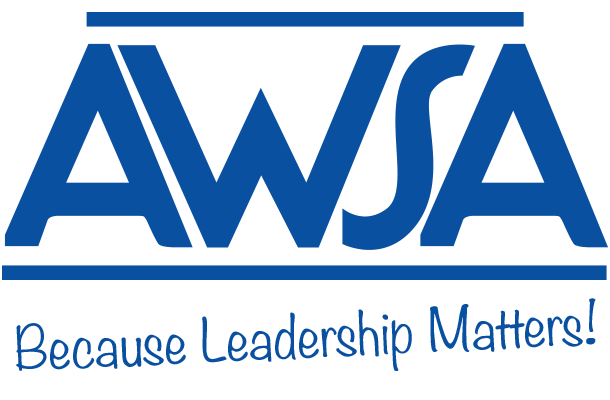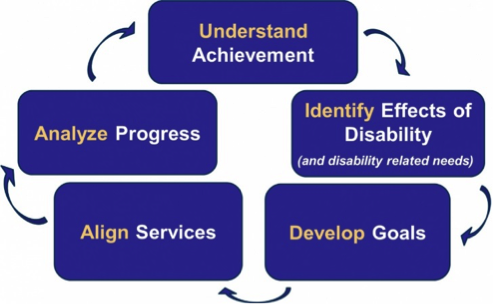College and Career Ready IEPs: Improving Outcomes for Students 3 through 21by Paula Volpiansky, School Administration Consultant, Wisconsin Department of Public Instruction Overview and Background Wisconsin has been a national leader in education because our values include the importance of a high-quality public education. We believe every student will graduate from our public schools, prepared for college and a career. As administrators, you hold an important role. Staff, families, and parents will look to you to model and provide direction regarding how this belief is understood and accomplished in your districts. What do students who require special education services through an Individualized Education Program (IEP) need to know in order to prepare for college and a career? In short, the same things any other student needs to know. We know that true college and career readiness is about much more than academics. We also know such readiness begins in early childhood and continues through elementary and high school. As with any student, each graduate with an IEP should leave school with the knowledge, skills, and habits needed for independence, self-determination, critical thinking, communication, collaboration, creativity, leadership, adaptability, responsibility and perseverance. With this in mind, the Wisconsin Department of Public Instruction developed the College and Career Ready (CCR) IEP framework. This framework provides students, parents, educators, administrators, and others with a vehicle to guide practices that represent and realize our beliefs about students with disabilities. It also supports federal special education accountability requirements for results driven accountability (RDA) in Wisconsin’s focus area of literacy [In Wisconsin, RDA is “Reading Drives Achievement: Success through Literacy”] and federal guidance reminding us that “the primary vehicle for providing a free and appropriate public education [for students with disabilities] is through an appropriately developed IEP. Thus, the IEP is not just about documenting compliance with state and federal requirements. It is a tool for making positive change in the lives of students with disabilities.
The CCR IEP Framework All components of the CCR IEP framework highlight our RDA focus on improving reading and literacy outcomes supported by significant federal Office of Special Education and Rehabilitative Services (OSERS) guidance noting: Research has demonstrated that children with disabilities who struggle in reading and mathematics can successfully learn grade-level content and make significant academic progress when appropriate instruction, services, and supports are provided. Conversely, low expectations can lead to children with disabilities receiving less challenging instruction that reflects below grade-level content standards, and thereby not learning what they need to succeed at the grade in which they are enrolled. Additional federal Department of Education OSERS guidance that highlights concerns about the overuse of disciplinary removals and the importance of appropriate behavior supports for students whose behavior impedes the student’s learning or that of others, adds: Research shows that school-wide, small group, and individual behavioral supports that use proactive and preventative approaches, address the underlying cause of behavior, and reinforce positive behaviors are associated with increases in academic engagement, academic achievement, and fewer suspensions and dropouts
The focus of a CCR IEP is on access, engagement, and progress in early childhood and grade level curriculum, instruction, and other activities individualized to each student’s strengths, needs, and interests. Each student with an IEP requires services and supports matched to their strengths and needs in order to access grade-level standards based curriculum. Alternate achievement standards are available for students with the most significant cognitive disabilities. Five CCR IEP Beliefs, based on feedback from stakeholders across Wisconsin, serve as the foundation for the framework and provide a link to existing educator initiatives, supports, and resources available through the Department of Public Instruction. These beliefs incorporate research-based factors considered necessary for positive student outcomes and include High Expectations, Culturally Responsive Practices, Student Relationships, Family and Community Engagement, and Collective Responsibility. The framework also includes updated sample IEP forms and guidance to focus IEP team discussions on the essential components of a student’s IEP. A central component of this guidance is the CCR IEP Five Step Process, which provides IEP teams with a structure for linking an understanding of the student’s academic and functional performance to the unique strengths and needs of the student.
The CCR 5 Step Process for IEP Development IEP teams using the CCR IEP Five Step Process develop a deep understanding of the student’s unique disability-related needs that affect access, engagement, and progress in early childhood and grade level general education standards based curriculum, instruction, and environments. Root cause analysis is a key feature of the CCR IEP Five Step Process and is highlighted in Step 2 of the process. Step 1: Understand the student’s current academic achievement and functional performance as it relates to access, engagement, and progress in relation to early childhood/grade-level academic standards and functional skill expectations. Data from multiple sources is used, including information and viewpoints from the family and student, regarding strengths, interests, and areas of concern Step 2: This step has three parts: effects, root cause analysis, and disability-related needs. Identify “how” the student’s disability is observed to affect access, engagement, and progress in general education instruction, activities, and environments. Explore areas in which the student is achieving success to identify ways to capitalize on student strengths. Use root cause analysis to dig deep to determine “why” the student is not meeting age/grade level standards and expectations so the student’s disability-related needs can be summarized and addressed. Disability-related needs go beyond eligibility criteria and impairment label(s). Step 3: Develop ambitious and achievable goals that close achievement gaps by supporting the student’s unique disability-related needs. Step 4: Align specially designed instruction, services, supports, and accommodations needed to address disability-related needs, support IEP goals, and ensure access to the general curriculum. IEP services enable the student to access, engage, and make progress in early childhood/grade level standards-based curriculum and instruction, other activities, and environments. Step 5: Analyze progress toward the ambitious and achievable goals. Annual and interim reviews of progress identify what is working and what may need to change to address the student’s disability-related needs more effectively; and support student access, engagement, and progress in standards-based instruction and other educational activities.
Next Steps: What Administrators Can Do Students with IEPs and the educators who support them have come a long way since the Individual with Disabilities Education Act (IDEA) was first enacted by Congress in 1975. Research, technology advances, and practical experience have provided multiple ways for us to effectively engage students with IEPs and promote their access and progress in standards-based content and instruction. These innovations, along with changes in how we “think” of students with disabilities, are providing unprecedented opportunities for students with IEPs in our public schools as well as transforming workplaces and institutions of higher learning. By adopting and supporting the implementation of the CCR IEP framework, school leaders can play a major role in realizing our shared vision of every student being college, career, and community ready. Educators and families who have received training in the CCR IEP framework will find the need to change how they prepare for and hold IEP team meetings. Understanding the CCR IEP Beliefs and 5-Step Process transforms the discussion from form-driven to process-driven. The following recommendations are provided to assist school administrators and other leadership in supporting this important evolution of the IEP process.
For more information on CCR IEPs, visit the Wisconsin Department of Public Instruction’s IEP web site where you will find sample IEP forms, webinars, training materials, Five Step Process steps at a glance guidance documents, and an online discussion tool. https://dpi.wi.gov/sped/college-and-career-ready-ieps
Other References and Suggested Reading OSERS Policy Guidance on Free Appropriate Public Education (FAPE) Dear Colleague Letter, November 16, 2015. OSERS Policy Guidance on Ensuring Equity and Providing Behavioral Supports to Students with IEPs Dear Colleague Letter, August 1, 2016. OSERS Guidance Preschool Least Restrictive Environments (LRE) Dear Colleague Letter, January 9, 2017. Paula is a consultant at the Wisconsin Department of Public Instruction. She primarily provides leadership for major team initiatives with a focus on results driven accountability (RDA). Her current focus is on the development and delivery of technical assistance materials on College and Career Ready IEPs (CCR-IEPs). She previously served as a compliance consultant, conducted IDEA complaint investigations, coordinated several statewide initiatives aimed at improving student outcomes and served as the state’s Learning Disability Consultant. Before coming to DPI, she was a teacher, special education administrator, and university faculty. She has developed technical assistance materials and papers on a variety of special education related topics. Read more at:
|

 Ensuring students with IEPs have access to grade-level academic standards and high expectations, does not mean a one-size-fits-all program. The CCR IEP Five Step Process emphasizes the importance of identifying and designing services to address each student’s specific and unique disability-related needs. The immediate goal of applying the framework is the development and implementation of an IEP that clearly addresses both a student’s academic and functional (i.e. social emotional, behavioral, physical, sensory, etc.) needs and includes ambitious and achievable IEP goals, services aligned support the needs and goals, and a means to analyze progress and adjust the student’s program as needed. The ultimate goal is for every student with an IEP to leave school prepared for life after high school; college, career, and community ready.
Ensuring students with IEPs have access to grade-level academic standards and high expectations, does not mean a one-size-fits-all program. The CCR IEP Five Step Process emphasizes the importance of identifying and designing services to address each student’s specific and unique disability-related needs. The immediate goal of applying the framework is the development and implementation of an IEP that clearly addresses both a student’s academic and functional (i.e. social emotional, behavioral, physical, sensory, etc.) needs and includes ambitious and achievable IEP goals, services aligned support the needs and goals, and a means to analyze progress and adjust the student’s program as needed. The ultimate goal is for every student with an IEP to leave school prepared for life after high school; college, career, and community ready.